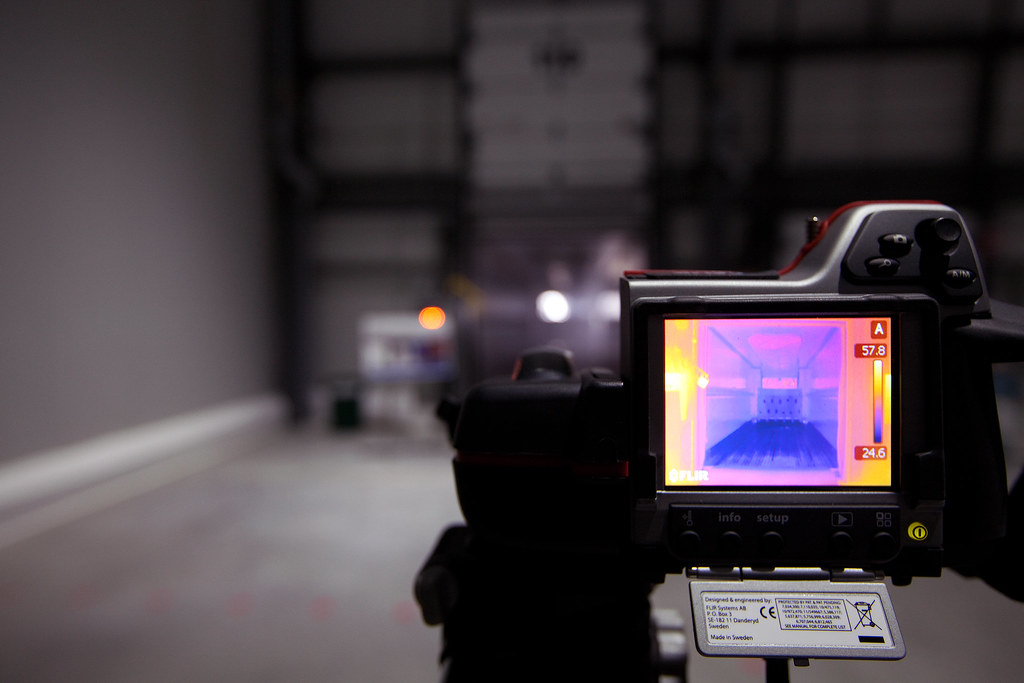How Thermal Imaging Technology Assists My Long Island Mold Removal in Detecting Hidden Mold Growth and Moisture Issues in Walls, Ceilings, and Hard-to-Reach Areas
January 9, 2025
Thermal imaging technology substantially aids your Long Island mold removal by detecting hidden moisture and mold growth in walls, ceilings, and hard-to-reach areas. It uses infrared cameras to visualize heat signatures and temperature variations, indicating cooler areas where moisture accumulates. This non-invasive method provides real-time diagnostic assessments without physical disruption. Thermal imaging identifies temperature anomalies behind walls and under floors, pinpointing potential mold issues accurately. By detecting moisture issues early, it prevents larger mold problems and facilitates more effective remediation solutions, reducing associated health risks. Continuing with this approach will help you understand the step-by-step process and how it integrates with other detection techniques. How Thermal Imaging Technology Assists My Long Island Mold Removal in Detecting Hidden Mold Growth and Moisture Issues in Walls, Ceilings, and Hard-to-Reach Areas When using thermal imaging for mold detection, you can identify hidden moisture and mold growth in walls, ceilings, and hard-to-reach areas with precision. This technology detects temperature variations, highlighting cooler spots where moisture has accumulated, which are often indicative of mold growth. By employing thermal imaging, you can conduct non-invasive, real-time inspections that pinpoint potential mold issues early, preventing more severe problems and ensuring effective remediation strategies. Introduction to Thermal Imaging for Mold DetectionThermal imaging technology helps you detect hidden moisture and mold in hard-to-reach areas by identifying temperature differences caused by moisture. Using infrared cameras, you can visualize heat signatures that indicate cooler temperatures, often associated with moisture accumulation, which are represented as blue or colder colors on the thermal image. This non-invasive method allows for real-time diagnostic assessments, pinpointing potential mold growth areas behind walls, ceilings, and other structures without the need for physical disruption. How thermal imaging detects hidden moisture and mold in hard-to-reach areas using heat signaturesThermal imaging technology plays a crucial role in detecting hidden moisture and mold in hard-to-reach areas by identifying temperature variations that are not visible to the naked eye. Using infrared technology, you can perform moisture mapping to identify cooler areas, indicative of hidden mold growth. This non-invasive method allows for real-time, diagnostic assessments, helping you pinpoint potential mold issues quickly and accurately. Benefits of Thermal Imaging for Early Detection of MoldUsing thermal imaging, you can non-invasively detect moisture issues in walls, ceilings, and hard-to-reach areas, preventing larger mold problems from developing. This technology accurately identifies temperature differences caused by moisture, allowing for real-time diagnostic assessments without damaging the building structure. By detecting these issues early, you can take prompt action to address water damage and mold growth, ensuring more effective and thorough mold remediation solutions. How thermal cameras provide non-invasive, accurate detection of moisture issues and prevent larger mold problemsWhen detecting hidden mold growth and moisture issues, advanced infrared cameras play a crucial role in providing a non-invasive and highly accurate method of inspection. Thermal imaging technology allows for real-time detection of temperature variations, indicating moisture accumulation in walls, ceilings, and hard-to-reach areas. This non-invasive mold detection method facilitates early detection of moisture issues, preventing larger mold problems and associated health risks. The Step-by-Step Process of Using Thermal Imaging in Mold InspectionsWhen using thermal imaging for mold inspections, you start by conducting a visible inspection of the exterior and interior of the property to note any visible issues or areas of concern. Next, you verify there is a sufficient temperature difference between the interior and exterior surfaces, typically at least 18 °F (10 °C), and record interior and exterior air temperatures, humidity, and weather conditions. You then use an infrared camera to scan for temperature anomalies, such as cold spots or hot spots, which can indicate moisture accumulation or other conditions conducive to mold growth, allowing you to pinpoint areas for further investigation and develop a targeted remediation plan. How My Long Island Mold Removal uses thermal imaging to locate moisture, identify mold, and create a remediation planMy Long Island Mold Removal leverages advanced thermal imaging technology to pinpoint hidden mold growth and moisture issues in walls, ceilings, and other hard-to-reach areas. This non-invasive method detects temperature variations, indicating moisture problems that can lead to mold. While thermal imaging doesn’t directly identify mold, it reveals cold spots and water damage, guiding precise mold detection and effective mold remediation plans. Combining Thermal Imaging with Other Mold Detection TechniquesWhen using thermal imaging for mold inspections, it is vital to combine this technology with other detection methods to guarantee a thorough assessment. You should supplement thermal imaging with air sampling to test for mold spores in the indoor environment and moisture meters to measure the moisture levels in walls and other materials. This integrated approach helps to accurately identify and confirm the presence of mold, as thermal imaging alone can only indicate potential moisture issues that may lead to mold growth. How thermal imaging works alongside other methods like air sampling and moisture meters to ensure comprehensive mold inspectionsThermal imaging plays a crucial role in thorough mold inspections by complementing other detection methods such as air sampling and moisture meters. Here’s how these techniques work together:
|
|